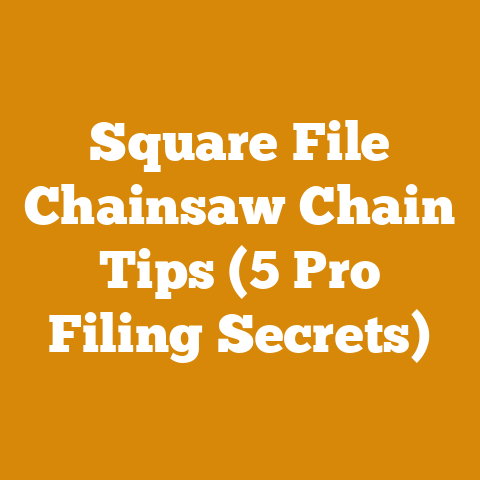How to Stop Roots from Growing (Expert Arborist Root Control Tips)
Understanding the Root of the Problem: Identifying the Need for Root Control
Before we even think about budgets, we need to understand why we’re controlling roots in the first place.
Is it to protect your home’s foundation?
Prevent damage to underground utilities?
Or are you simply trying to reclaim your garden from an overzealous tree?
Common Scenarios Requiring Root Control:
- Foundation Damage: Tree roots, especially those of thirsty species like willows and poplars, can exert immense pressure on foundations, leading to cracks and structural issues.
- Sewer Line Intrusion: Roots are notorious for infiltrating sewer lines through the tiniest cracks, causing blockages and costly repairs.
- Pavement Uplift: Surface roots can lift sidewalks, driveways, and patios, creating tripping hazards and aesthetic problems.
- Competition with Other Plants: Aggressive tree roots can steal water and nutrients from your prized garden plants, stunting their growth.
- Invasive Species Management: Controlling the spread of invasive trees and shrubs often requires targeted root management.
The Value Proposition: Addressing these issues proactively is almost always cheaper than dealing with the consequences down the road.
A cracked foundation, a burst sewer line, or a completely ruined garden can cost significantly more to repair than implementing preventative root control measures.
Root Control Methods: A Cost-Benefit Analysis
Now that we understand the need, let’s explore the various methods available, along with their associated costs.
1. Physical Barriers: Trenching and Root Pruning
Description: This method involves physically cutting and removing roots within a defined area.
A trench is dug around the area you want to protect, and any roots encountered are severed.
Root barriers (plastic or metal sheets) can then be installed in the trench to prevent future root growth in that direction.
Cost Factors:
- Labor: This is the biggest cost factor.
Hiring a professional arborist can range from \$75 to \$200 per hour, depending on location and experience.
DIY is possible, but labor-intensive and potentially dangerous if you’re dealing with large roots or underground utilities. - Equipment: Renting a trencher can cost \$75 to \$150 per day.
You’ll also need shovels, saws (reciprocating saw with a root-cutting blade or even a chainsaw for larger roots), and possibly a stump grinder if you encounter large root masses.
I’ve found that investing in a good quality reciprocating saw with specialized blades saves time and reduces strain, especially for smaller projects. - Root Barrier Material: Plastic root barriers typically cost \$1 to \$3 per linear foot, while metal barriers can range from \$5 to \$15 per linear foot.
The material choice depends on the aggressiveness of the root system and the desired lifespan of the barrier. - Disposal Costs: Removing and disposing of large quantities of roots can incur additional costs, especially if you need to rent a dumpster or pay for landfill fees.
Cost Breakdown (Example):
Let’s say you want to install a 50-foot root barrier to protect your foundation.
- Arborist Labor (8 hours at \$100/hour): \$800
- Trencher Rental (1 day): \$100
- Plastic Root Barrier (50 feet at \$2/foot): \$100
- Disposal Costs: \$50
- Total Estimated Cost: \$1050
Pros:
- Effective in providing immediate root control.
- Can be combined with root barriers for long-term protection.
- Environmentally friendly compared to chemical methods.
Cons:
- Labor-intensive and physically demanding.
- Can damage the tree if too many roots are removed.
- May require specialized equipment.
- Can be aesthetically unappealing if the trench is not properly backfilled.
My Experience: I once worked on a project where a homeowner had attempted to install a root barrier themselves, only to realize they were in over their head.
They had severed several large roots, destabilizing the tree and creating a safety hazard.
They ended up hiring a professional arborist to finish the job and assess the tree’s health.
This experience highlights the importance of knowing your limitations and not being afraid to call in the experts when needed.
2. Chemical Root Control: Herbicides
Description: This method involves applying herbicides directly to the roots to kill them.
Herbicides can be applied through soil injection, root flare application, or by cutting and treating individual roots.
Cost Factors:
- Herbicide Cost: Herbicides specifically designed for root control can range from \$20 to \$100 per gallon, depending on the active ingredient and concentration.
Glyphosate and imazapyr are commonly used, but their effectiveness varies depending on the tree species. - Application Equipment: You’ll need a sprayer, soil injector, or paintbrushes, depending on the application method.
These can range from \$20 for a basic sprayer to \$200 or more for a professional-grade soil injector. - Labor: While chemical application can be less labor-intensive than physical barriers, it still requires careful application and knowledge of herbicide safety.
Hiring a professional is recommended, especially for large-scale projects or when dealing with sensitive areas. - Environmental Considerations: Always factor in the potential environmental impact of herbicides.
Choose products that are specifically designed for root control and follow all label instructions carefully.
Be mindful of nearby water sources and non-target plants.
Cost Breakdown (Example):
Let’s say you want to treat a 20-foot section of sewer line with a root-killing herbicide.
- Herbicide Cost (1 gallon): \$50
- Sprayer: \$30
- Labor (2 hours at \$75/hour): \$150
- Total Estimated Cost: \$230
Pros:
- Relatively easy to apply compared to physical barriers.
- Can be effective in killing roots and preventing regrowth.
- Less disruptive to the surrounding landscape.
Cons:
- Potential environmental impact.
- May not be effective on all tree species.
- Can be harmful to non-target plants if not applied carefully.
- May require multiple applications.
- Can be slow acting compared to physical barriers.
Important Note: Always consult with a qualified arborist or extension agent before using herbicides for root control.
They can help you choose the right product, application method, and safety precautions.
My Experience: I once consulted on a project where a homeowner had repeatedly applied glyphosate to tree roots invading their garden, without success.
They were using a generic herbicide that was not specifically formulated for root control, and they were not applying it correctly.
We recommended a different herbicide and a more targeted application method, which finally solved the problem.
This highlights the importance of using the right product and following the instructions carefully.
3. Root Growth Regulators (RGRs)
Description: Root growth regulators are chemicals that slow down root growth without killing the tree.
They work by inhibiting cell division and elongation in the roots.
They are typically applied as a soil drench or injection.
Cost Factors:
- RGR Cost: RGRs are generally more expensive than herbicides.
A gallon of RGR concentrate can range from \$100 to \$300, depending on the active ingredient and concentration. - Application Equipment: Similar to herbicides, you’ll need a sprayer or soil injector.
- Labor: Professional application is recommended, as RGRs need to be applied at specific rates and timings to be effective.
- Tree Size and Species: The amount of RGR required depends on the size and species of the tree.
Larger trees and more aggressive species will require more product.
Cost Breakdown (Example):
Let’s say you want to treat a medium-sized tree (20-inch diameter) with an RGR to reduce root growth near your foundation.
- RGR Cost (sufficient for one application): \$150
- Soil Injector Rental (if needed): \$50
- Labor (2 hours at \$75/hour): \$150
- Total Estimated Cost: \$350
Pros:
- Less harmful to the tree than herbicides.
- Can reduce the need for frequent root pruning.
- May improve the overall health of the tree by redirecting energy to other parts of the plant.
Cons:
- More expensive than herbicides.
- May not be effective on all tree species.
- Requires precise application.
- Effects are temporary and need to be reapplied periodically.
My Insight: RGRs are a good option when you want to manage root growth without harming the tree, but they are not a one-time fix.
You’ll need to factor in the cost of reapplication every few years.
4. Natural Root Control Methods
Description: These methods focus on creating an unfavorable environment for root growth, using natural materials and techniques.
Examples:
- Trenching and Filling with Gravel: Dig a trench and fill it with gravel to create a physical barrier that is less likely to be penetrated by roots.
- Creating a Dry Zone: Reduce watering near the area you want to protect.
Roots will naturally grow towards sources of water. - Amending the Soil: Adding organic matter to the soil can improve drainage and reduce the need for roots to seek out water elsewhere.
- Planting Root-Barrier Plants: Certain plants have root systems that are less aggressive and can compete with tree roots for resources.
Cost Factors:
- Materials: Gravel, soil amendments, and plants.
Gravel can cost \$20 to \$50 per cubic yard, depending on the type and location.
Soil amendments like compost and mulch can range from \$10 to \$50 per cubic yard.
Plants vary widely in price, depending on the species and size. - Labor: DIY is common for these methods, but hiring a landscaper can speed up the process and ensure proper installation.
Cost Breakdown (Example):
Let’s say you want to create a gravel barrier around a garden bed to prevent tree roots from invading.
- Gravel (2 cubic yards): \$80
- Labor (DIY): \$0
- Total Estimated Cost: \$80
Pros:
- Environmentally friendly and sustainable.
- Can improve soil health and drainage.
- Relatively inexpensive, especially for DIY projects.
Cons:
- May not be as effective as other methods for controlling aggressive root systems.
- Can be time-consuming to implement.
- Requires ongoing maintenance.
My Perspective: I’ve found that natural root control methods are most effective when used in combination with other techniques.
For example, you could create a gravel barrier and also reduce watering in the area to discourage root growth.
Cost Optimization Strategies: Getting the Most for Your Money
Now that we’ve covered the various root control methods and their associated costs, let’s talk about how to optimize your budget and get the most for your money.
1. DIY vs. Professional: Knowing Your Limits
One of the biggest decisions you’ll face is whether to tackle the project yourself or hire a professional.
DIY can save you money on labor costs, but it also requires time, effort, and the right tools.
Factors to Consider:
- Your Skill Level: Are you comfortable using power tools and working with chemicals?
Do you have experience with landscaping or arboriculture? - The Complexity of the Project: Is it a small, straightforward project, or a large-scale, complex undertaking?
- Your Time Commitment: Do you have the time to dedicate to the project?
- Safety: Are you aware of the potential safety hazards and how to mitigate them?
Rule of Thumb: If you’re dealing with large roots, underground utilities, or sensitive areas, it’s generally best to hire a professional.
The cost of a mistake can far outweigh the savings from DIY.
2. Comparing Quotes: Don’t Settle for the First Offer
Always get multiple quotes from different arborists or landscapers before making a decision.
Compare the quotes carefully, paying attention to the scope of work, materials used, and labor costs.
Don’t just choose the cheapest option; consider the reputation and experience of the contractor.
Questions to Ask When Getting Quotes:
- What is your experience with root control?
- What methods do you recommend for my situation?
- What are the potential risks and benefits of each method?
- What is your warranty or guarantee?
- Are you licensed and insured?
3. Timing is Everything: Seasonal Considerations
The time of year can affect the cost and effectiveness of root control methods.
For example, root pruning is best done during the dormant season (late fall or early spring) when the tree is less stressed.
Herbicide applications may be more effective during periods of active growth.
Seasonal Cost Fluctuations:
- Demand for arborists and landscapers tends to be higher during the spring and fall, which can drive up prices.
- Material costs may fluctuate depending on the season and availability.
4. Preventative Measures: Addressing the Root Cause
The best way to save money on root control is to prevent problems from occurring in the first place.
This includes:
- Choosing the Right Tree Species: Select trees that are appropriate for your location and soil conditions.
Avoid planting aggressive species near foundations, sewer lines, or other sensitive areas. - Proper Planting Techniques: Plant trees at the correct depth and spacing.
Ensure that the roots have plenty of room to grow without interfering with nearby structures. - Regular Pruning: Prune trees regularly to remove dead, damaged, or crossing branches.
This can help to reduce the overall size of the tree and its root system. - Proper Watering and Fertilization: Provide trees with adequate water and nutrients to promote healthy growth.
This can help to prevent them from seeking out water and nutrients from other sources, such as sewer lines.
5. Negotiating Prices: It Never Hurts to Ask
Don’t be afraid to negotiate prices with contractors.
You may be able to get a discount by paying in cash, bundling services, or scheduling the work during off-peak season.
Negotiation Tactics:
- Do your research and know the average prices for root control services in your area.
- Be polite and respectful.
- Be willing to walk away if you can’t reach an agreement.
6. Phased Approach: Breaking Down the Project
If you’re facing a large and expensive root control project, consider breaking it down into smaller, more manageable phases.
This can help you to spread out the costs over time and prioritize the most urgent issues.
Example:
- Phase 1: Install a root barrier to protect your foundation.
- Phase 2: Treat sewer lines with a root-killing herbicide.
- Phase 3: Prune the tree to reduce its overall size.
7. Material Sourcing: Finding the Best Deals
Shop around for the best prices on materials like root barriers, herbicides, and gravel.
Consider buying in bulk if you have a large project.
Tips for Finding Deals:
- Check online retailers and local nurseries.
- Look for sales and discounts.
- Consider buying used equipment if you’re comfortable with it.
8. Maintenance and Monitoring: Preventing Future Problems
Once you’ve implemented root control measures, it’s important to maintain and monitor the area to prevent future problems.
This includes:
- Regularly inspecting root barriers for damage.
- Reapplying herbicides or RGRs as needed.
- Pruning trees to maintain their size and shape.
- Monitoring sewer lines for root intrusion.
Real-World Case Studies: Learning from Experience
Let’s take a look at a few real-world case studies to illustrate the cost and effectiveness of different root control methods.
Case Study 1: Foundation Protection
- Problem: Tree roots were causing cracks in a homeowner’s foundation.
- Solution: A professional arborist installed a 40-foot root barrier.
- Cost: \$1200 (including labor and materials).
- Outcome: The root barrier effectively prevented further damage to the foundation.
Case Study 2: Sewer Line Intrusion
- Problem: Tree roots were blocking a homeowner’s sewer line.
- Solution: The homeowner treated the sewer line with a root-killing herbicide.
- Cost: \$250 (including herbicide and application).
- Outcome: The herbicide killed the roots and cleared the sewer line.
The homeowner needs to reapply the herbicide every year.
Case Study 3: Garden Reclamation
- Problem: Tree roots were invading a homeowner’s garden bed.
- Solution: The homeowner created a gravel barrier around the garden bed and reduced watering in the area.
- Cost: \$100 (including gravel).
- Outcome: The gravel barrier and reduced watering helped to discourage root growth in the garden bed.
The Future of Root Control: Emerging Technologies
The field of root control is constantly evolving, with new technologies and techniques emerging all the time.
Examples:
- Bio-Barriers: These barriers use beneficial microbes to prevent root growth.
- Air Spading: This technique uses compressed air to remove soil around roots without damaging them.
- Robotic Root Pruning: Robots are being developed to automate the process of root pruning.
While these technologies are not yet widely available, they hold promise for the future of root control.
- Identify the Problem: Clearly define the issue you’re trying to address with root control.
- Assess Your Options: Research the different root control methods and determine which ones are best suited for your situation.
- Get Quotes: Obtain multiple quotes from qualified professionals.
- Create a Budget: Develop a realistic budget for the project, taking into account all costs.
- Implement the Solution: Choose the best root control method and implement it carefully.
- Maintain and Monitor: Regularly inspect and maintain the area to prevent future problems.
Final Thoughts
Dealing with unwanted root growth can be a headache, but by understanding the costs involved and implementing effective control measures, you can protect your property and maintain a healthy landscape.
Remember, preventative measures are always the most cost-effective, so choose the right tree species, plant them properly, and maintain them regularly.
With a little planning and effort, you can keep those roots in check and enjoy a beautiful, worry-free landscape.






